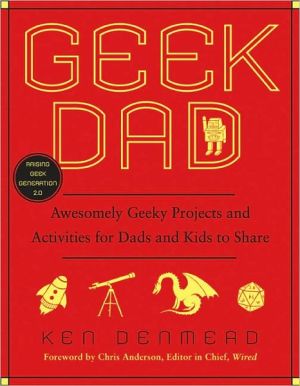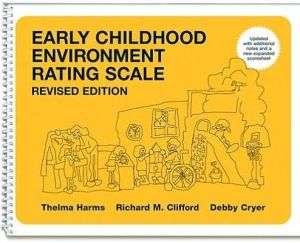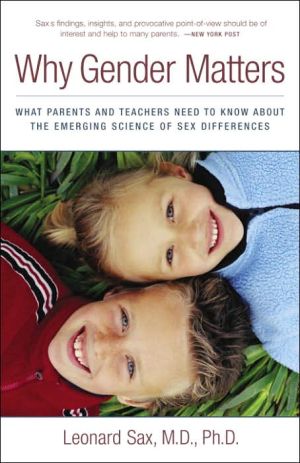All Kids Are Our Kids: What Communities Must Do to Raise Caring and Responsible Children and Adolescents
The measure of a society's health is how well it takes care of the youngest generation. By this standard, we fail. But All Kids Are Our Kids offers an approach to unleash the extraordinary power of community when people unite around a widely shared vision of healthy child and adolescent development.\ All Kids Are Our Kids introduces forty Developmental Assets—building blocks of healthy development that are essential for all youth, regardless of their background. The challenge for all segments...
Search in google:
The measure of a society's health is how well it takes care of the youngest generation. By this standard, we fail. But All Kids Are Our Kids offers an approach to unleash the extraordinary power of community when people unite around a widely shared vision of healthy child and adolescent development. All Kids Are Our Kids introduces forty Developmental Assets--building blocks of healthy development that are essential for all youth, regardless of their background. The challenge for all segments of the community--families, neighbors, schools, congregations, employers, youth organizations, and more--is to share in the responsibility for taking action to ensure that all kids have what they need to grow up healthy, successful, and caring. This new edition includes new evidence, cites successful cases, and makes recommendations for energizing individuals, families, and community action. Praise for All Kids Are Our Kids "A practical, concrete blueprint for helping young people succeed because of supportive communities." --Donald T. Floyd, Jr., president and CEO, National 4-H Council "For two decades, Peter Benson has been America's most eloquent and persuasive voice for a new, positive approach to enhancing the lives of our nation's youth. If policy makers, practitioners, and researchers read only one book about how to act in support of our nation's youth, then this is it!" --Richard M. Lerner, Bergstrom Chair in Applied Developmental Science and director, Institute forApplied Research in Youth Development, Eliot-Pearson Department of Child Development, Tufts University "Peter Benson continues to remind us of how farshort of the mark we have fallen in meeting the needs of our youngest generation. But then he provides a gift: a unifying vision that we can all rally around: parents, neighbors, youth-serving organizations, and ultimately whole communities committed to the healthy development of all our kids." --Judy Vredenburgh, president and CEO, Big Brothers Big Sisters of America "Benson's approach is the best formula we have for building communities to meet the developmental needs of young people. Anyone who is concerned about the future of our society should read this book." --William Damon, professor of education, Stanford University, and director, Stanford Center on Adolescence VOYA This well-documented title details how members of a community working together can create a more positive environment for raising healthy children. The author, the director of The Search Institute, a nonprofit research and educational organization, asserts that it takes a specific type of village to raise a healthy child. The first half of this book concentrates on what requirements children need in order to lead successful lives and where American society stands right now in providing these. The author identifies eight types of developmental assets that children need to succeed: support, empowerment, boundaries and expectations, constructive use of time, commitment to learning, positive values, social competencies, and positive identity. In the second half, Benson presents strategies on how communities can meet these requirements and provides specific ways individuals and institutions can contribute. Though libraries are not directly mentioned, they fall under the category of community youth organizations, and an entire chapter is devoted to the topic of how these groups can find each other and reach out to youth. This title is a valuable asset to any library reevaluating their role within their community or for those creating their mission statement for the first time. Index. Charts. Source Notes. Further Reading. Appendix.
List of Figures and TablesPrefaceAcknowledgmentsThe Author1Introduction: From Peril to Possibility12Developmental Assets: Forty Building Blocks of Human Development273The State of Developmental Assets Among Youth544Extending Assets from Birth to Adulthood775A Call to Action: Twelve Critical Culture Shifts866Uniting Communities Around Youth: Seven Essential Goals1037From Planting to Harvest: Strategies for Growing a Healthy Community1248The Power of One: Engaging Individuals1579Crucibles of Care: Strengthening Families17610The First Ring of Support: Youth-Serving Systems19011Uniting the Village: The Role of All Sectors in the Community207Postscript: The Power of Communities225App. ASelected References for the Forty Developmental Assets233App. BFindings from the 1990-1995 Assets Sample245App. CThe Progression of Developmental Assets from Birth to Age 18279Notes283Index299
\ VOYA\ - Katie O'Dell Madison\ This well-documented title details how members of a community working together can create a more positive environment for raising healthy children. The author, the director of The Search Institute, a nonprofit research and educational organization, asserts that it takes a specific type of village to raise a healthy child. The first half of this book concentrates on what requirements children need in order to lead successful lives and where American society stands right now in providing these. The author identifies eight types of developmental assets that children need to succeed: support, empowerment, boundaries and expectations, constructive use of time, commitment to learning, positive values, social competencies, and positive identity. In the second half, Benson presents strategies on how communities can meet these requirements and provides specific ways individuals and institutions can contribute. Though libraries are not directly mentioned, they fall under the category of community youth organizations, and an entire chapter is devoted to the topic of how these groups can find each other and reach out to youth. This title is a valuable asset to any library reevaluating their role within their community or for those creating their mission statement for the first time. Index. Charts. Source Notes. Further Reading. Appendix.\ \ \ \ \ Library JournalIn 2000, the federal government spent $21,122 per adult over age 65-and only $2,106 per child in the same year. Clearly, children do not form a vocal constituency, and their needs are going unmet. This second edition of a 1997 book updates the ways that communities big and small can promote healthy growth for their children and teens. We need to shift cultural norms, says Benson, president of the nonprofit Search Institute, so that all residents understand their responsibilities to the young. Put more simply and popularly, this is a reiteration of the African proverb "It takes a village to raise a child." The book targets community organizers and agencies, such as YMCAs, churches and synagogues, libraries, and block associations. Benson cites hundreds of examples where community groups have effected change, including a coffee company in Iowa and a Lutheran church teen group in Pennsylvania. These are not programs aimed solely at reducing drug use or crime but strengthening kids to deal with school, home life, and jobs. An excellent resource for communities.-Linda Beck, Indian Valley P.L., Telford, PA Copyright 2006 Reed Business Information.\ \








